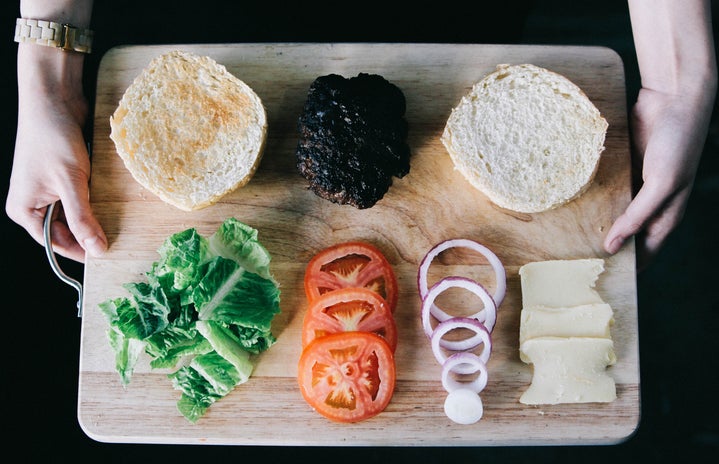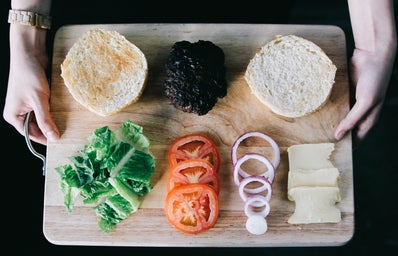Soda’s been villainized to the verge of a federal tax, the fruit juices we grew up on are too cloying for constant inhalation and unfortunately we can’t drink alcohol all day every day (that’s been dubbed alcoholism). So what’s a girl to swig? Water is always a great, albeit tasteless option, but other refreshments rival the benefits of the clear stuff with more panache. HC enlisted nutrition expert Susan Holmberg, CNS, to look deeper into some of the buzziest beverages for some surprising tips on how to sip the smart way, for what to avoid and what to look for.
Crystal Light
A staple in many women’s water bottles (and vodka concoctions), this low-calorie powder appears to be an innocuous boost of flavor. Alas, what seems to be too good to be true usually is, and the chemical composition of Crystal Light urges a second thought. The culprits are the dyes: Red 40, Yellow 5, and Blue 1. Most dyes originate from the petrochemical industry—an enormous red flag. “They can be stored in your fat cells, indefinitely, if not detoxed out by your liver immediately,” warns Holmberg. And while the more recent varieties of Crystal Light harbor additions such as fiber, vitamins and antioxidants, these nutrients are better derived from where they are originally found—in fruits, vegetables and whole grains. Holmberg likens the additives in Crystal Light as “trace amounts in otherwise unhealthy drinks,” added in her opinion, “to throw your conscience a bone.” Instead, health-conscious collegiettes™ can flavor water using natural sources like lemon juice, or stock up on all-natural water in flavors like Raspberry-Lime and Blackberry from Hint. For boozy times, Holmberg advises making a Bloody Mary. “The mix is filling, the spiciness tends to blunt your appetite, and the hot pepper acts as another source of tiny metabolism boost.”
Bottom Line: Nix chemical colorants and sweeteners and opt for natural sources of flavor like fresh lemon. For a healthy cocktail, sip a Bloody Mary.
Green Tea
Your grandma was on to something—tea, and green tea in particular, is a potent source of powerhouse antioxidants. The possible benefits of the brewed stuff are stunning: reducing likelihood of cancer, acting as an antibiotic, decreasing diabetes risk and raising mental alertness. “There is an amino acid in tea called L-Theonine that’s sold also in many anti-stress formulas,” reveals Holmberg. Extensive evidence associates L-Theonine with reducing physical and mental stress, conditions that are altogether common and unwanted in the hectic college lifestyle. Additionally, you may have seen a weight loss commercial touting green tea and written it off as bogus. As it turns out, one of the main constituents of green tea, EGCG, has been demonstrated to boost metabolism. “The catechin polyphenols found in green tea raise your body’s internal temperature,” Holmberg informs, in a process called thermogenesis. And while green tea has been connected with each of these health-increasing qualities, Holmberg clued us in on a little-reported fact: studies show that white tea (young green tea) is even more effective for most of the benefits. To reap the benefits of both teas, include lemon and refrain from adding milk to your mug. “Some studies show that milk blunts the effects of many of the good chemicals,” Holmberg explains, “but adding lemon seems to enhance the absorption of these chemicals, especially the catechins.”
Bottom Line: Brew green or white tea, but squeeze in lemon in lieu of milk.
[pagebreak]
Almond Milk
Almond products, such as almond milk and butter, are often hoarded by health foodies. Boasting the evasive characteristic of being rich, delicious and healthy that most diet-friendly foods seem to miss, almond milk contains a plethora of vital nutrients: vitamin E, magnesium, phosphorous, potassium, iron, fiber, zinc and calcium. Unsweetened almond milk contains 40 calories per 1-cup serving and is available in flavors like Original, Vanilla and Chocolate. But how does it stand up in comparison to cow’s milk? The case that almond milk is the better source of calcium can be made. Whereas almond milk is an alkaline food, cow’s milk is an acid-forming food. Acid-forming foods influence your blood pH to force your body to pull calcium from your bones, to act as a buffer for the acidity. “It’s sort of like making Tums inside your body,” Holmberg illustrates. “Therefore, getting your calcium from an acidic food, like cow’s milk, is counter-productive.” The kicker is that some almond milk utilizes calcium carbonate, which is more difficult for your body to absorb, so check the label on your variety. Overall, “almonds contain a lot of really good plant chemicals, as do all unprocessed plant foods,” concludes Holmberg.
Caption: Perfect for dorm-bound collegiettes! Almond milk only needs to be refrigerated after opening, so you can stock up once and have milk for months.
Bottom Line: Incorporate almond milk into your diet, but read the label first to check for calcium carbonate.
Soft Drinks
“Soda is crap,” begins Holmberg. “From the chemicals that we don’t even understand to the artificial sweeteners, to the phosphoric acid, which some studies show blocks calcium absorption, there is really nothing good to say about it.” Think calorie-free diet soda has to be a safe alternative? Nope, it comes with its own concern: seemingly harmless diet soda can dilute your body’s sense of sugar. Since the artificial sweeteners found in diet drinks are powerfully saccharine, they may cause you to require more real sugar to feel satisfied when you do indulge. “By having anything sweet regularly, it keeps your desire for sweet alive and kicking,” reports Holmberg, “and artificial sweeteners are extremely sweet.” To test this out for yourself, steer clear of artificial sweeteners for two weeks to reset, and then evaluate your sugar cravings. Coke has garnered a rough and well-deserved rap sheet, but soda enthusiasts can seek solace. Delighting in a fizz fix every once in a while poses little harm. “If you rarely drink it, soda can be a fairly innocent treat,” adds Holmberg, “especially when trying to space out alcoholic drinks or eat less when at a party.” Say no more!
Bottom Line: Soda is not a daily beverage. Assess diet soda’s effect on your sugar cravings, and save the pop for parties.
Bottoms up!
Sources:
Susan Holmberg, MS, CNS
http://www.susanholmberg.com

